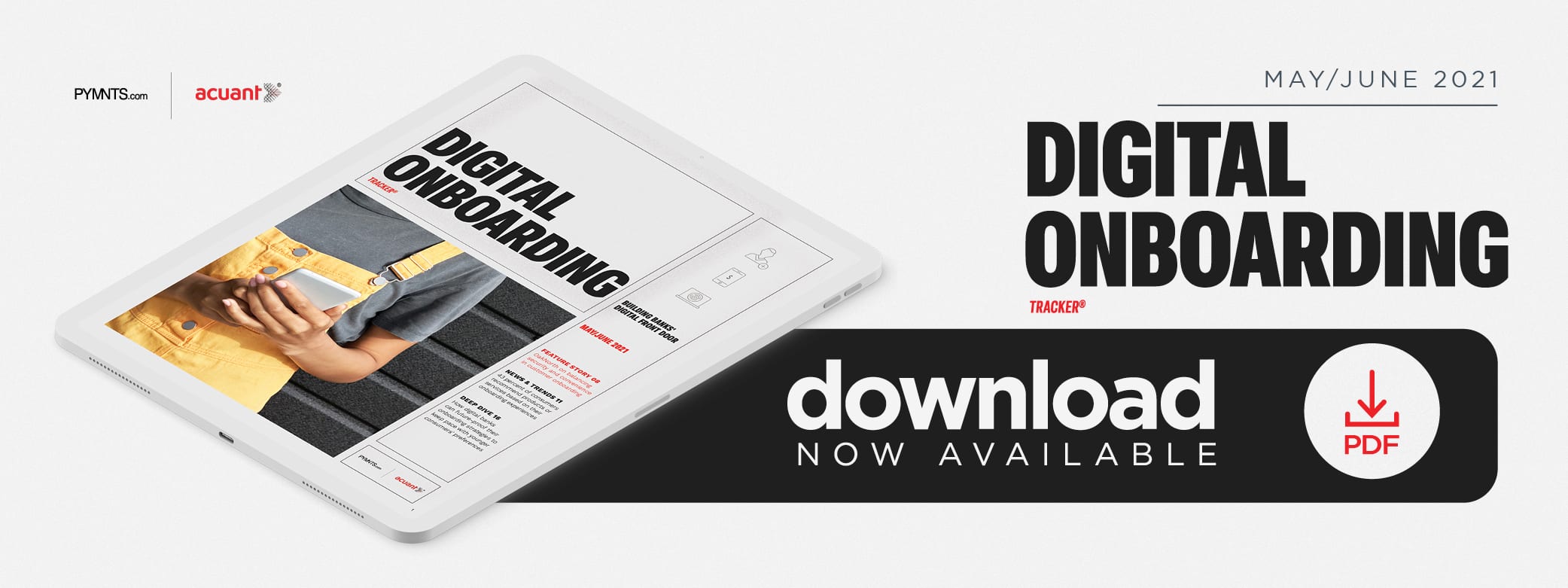OakNorth On Balancing Security And Convenience In Customer Onboarding

Machine learning (ML) can help digital banks do much of the heavy lifting during customer onboarding — especially if applicants have common names. In the Digital Onboarding Tracker, OakNorth’s Sean Hunter explains how ML-based systems can help banks cross-reference legitimate applicants’ data to avoid confusing them with their fraudster twins.
Digital banking has radically changed over the past year, with customers looking to open accounts faster than ever before. These changes appear to be permanent in many ways, with a recent study finding that half of all bank customers have used more digital banking products over the past 12 months than they had in previous years. Eighty-seven percent are planning to maintain their increased adoption of digital services in the years to come, in fact.
This shows that banks will have to step up their implementation of digital services to stand a chance of competing, and in few areas is this more important than customer onboarding. The increased volume of digital activity means that customers are looking for faster, more seamless experiences than ever before, according to Sean Hunter, chief information officer at OakNorth.
“[Banks have] seen a really radical acceleration, and they suddenly realized that all the systems they had for determining creditworthiness [and] monitoring businesses were really not suitable anymore,” he said in an interview with PYMNTS. “We had businesses literally call us up and ask [for our services to be] deployed within a week or two, which is very, very unusual for these large institutions.”
Providing a streamlined onboarding experience cannot come at the cost of security, however. Hunter recently offered PYMNTS an inside look at how OakNorth works to accomplish these two often contradictory objectives.
Simplicity Is Key To Seamless Onboarding
Hunter said the key to onboarding seamlessness is to keep things simple. The more services a given bank offers, the more potential security and compliance requirements it must meet. Focusing on a limited suite of responsibilities thus allows banks to better streamline their onboarding systems.
“One of the things we made a conscious choice about early on, when setting up the bank, was to keep to certain processes and keep them very simple,” he said. “We don’t do very complex transaction products, which allows us to be much simpler from a setup perspective. We put in certain restrictions on what kinds of accounts people can use to make payments, where payments can go and things like that.”
This simplification of services allowed OakNorth to onboard customers in record time, Hunter explained. Potential customers have a much lower chance of being fraudsters if there are limited opportunities for fraud to begin with, allowing the bank to automate the majority of the onboarding process with only a limited need for human intervention.
“We initially set up an affiliate digital onboarding journey for retail deposits, for example, where you could sign up on a web browser in a matter of seconds,” he said. “As long as you didn’t raise any alarms along the way, the process was fully digital and didn’t require any human touch at all.”
Nevertheless, even the most rigorous automated systems still require human aid every now and then. A quick conversation with a banker might be mildly inconvenient for a prospective customer, but this inconvenience pales in comparison to a potential false positive from an automated program.
Onboarding Security
OakNorth’s security system revolves around cross-referencing potential customers with known threats, relying on a machine learning (ML) algorithm to scan a number of databases, like watchlists and sanctions lists, to determine a given applicant’s risk profile. Hunter said the biggest challenge occurs when applicants have common names.
“If you’ve got someone with a fairly generic name, like John Smith, the number of hits that will come up in the news, or court records [or the like] could be, obviously, very high,” he explained. “We found that [machine learning] is pretty handy in terms of helping us to narrow it down and identify the right person so that we can then either have follow-up questions or say, ‘OK, it’s actually a different person.’”
Avoiding false positives is a key priority in OakNorth’s onboarding process as mistaking a legitimate applicant for a fraudster could result in frustration that damages the relationship the moment it starts. If the onus is on customers to clear their names, many could simply go to another bank rather than laboriously jump through hoops to prove their innocence.
“Minimizing false positives is really a very important part of this, because that’s a lot of arduous work and it makes it very slow for the customer,” Hunter said. “Whereas, if you’re able to avoid the vast majority of false positives, and in the vast majority of cases open the account in a fully digital manner without human touch, obviously it’s much, much easier and more efficient.”
Balancing security and seamlessness during onboarding is a constant struggle, and even the most digitally adept banks can struggle to get it right. It is a necessary challenge, however, and one that will never fade away. Any investments banks can make to keep the process smooth and secure will pay dividends down the line.
